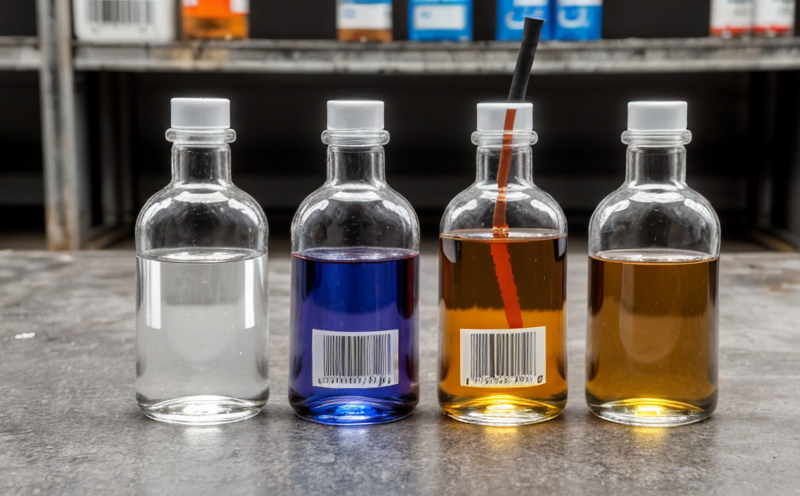GB T 16422 Plastic Stability Testing Against Light Aging
The GB/T 16422 series of standards is widely recognized in China for evaluating the resistance of plastics to light-induced aging. These tests are crucial for quality assurance and compliance, especially in industries like automotive, electronics, construction materials, and packaging where long-term exposure to sunlight can significantly impact product performance. The primary objective of these tests is to determine how well a plastic material maintains its physical properties under simulated accelerated weathering conditions.
The testing procedure involves exposing the specimens to a combination of ultraviolet (UV) light and heat. This setup simulates the effects of natural sunlight, which contains both visible light and UV radiation that can cause degradation in polymers over time. The GB/T 16422-2019 standard outlines specific methods for performing these tests under controlled environmental conditions.
The process typically starts with preparing samples according to specified dimensions and tolerances. These samples are then exposed to a xenon arc lamp, which provides broad-spectrum UV radiation similar to sunlight. The test chamber maintains precise temperature control, often between 50°C and 60°C, depending on the specific requirements of the material being tested.
During the exposure period, various parameters such as color change, loss in tensile strength, impact resistance, and other mechanical properties are monitored continuously. After reaching the predetermined aging time, the samples are evaluated for changes using standardized testing methods. This ensures that any observed alterations can be attributed to light aging rather than other factors.
The results of these tests provide critical data for material selection in design phases, helping companies ensure their products meet regulatory requirements and perform reliably over extended periods. Compliance with GB/T 16422 is often mandatory for manufacturers operating within the Chinese market or those seeking certifications that validate product longevity under harsh environmental conditions.
For R&D teams, this service offers invaluable insights into how different additives, processing methods, and raw materials affect a polymer’s stability. By identifying vulnerabilities early in development cycles, they can optimize formulations to enhance durability without compromising other essential properties like flexibility or transparency.
| Industry Segment | Specific Application |
|---|---|
| Automotive | Evaluating exterior trim parts resistance to UV radiation |
| Electronics | Assessing housing materials for electronic devices against light aging |
| Construction Materials | Determining the longevity of roofing membranes and insulation boards |
| Packaging | Testing packaging films and containers exposed to sunlight during transport |
- Automotive: Exterior trim parts, dashboards, and seats.
- Electronics: Housing materials for consumer electronics like TVs, computers, and smartphones.
- Construction Materials: Roofing membranes, insulation boards, and window frames.
- Packaging: Films used in food packaging, containers for beverages, and other goods subject to UV exposure.
The comprehensive approach provided by GB/T 16422 ensures that manufacturers have the necessary tools to predict real-world performance accurately. This enables them not only to meet current standards but also anticipate future challenges posed by climate change or increased environmental stressors.
Benefits
Conducting GB/T 16422 plastic stability testing offers numerous advantages that contribute significantly to product quality and customer satisfaction:
- Enhanced Product Durability: By simulating the effects of sunlight, this test helps identify potential weaknesses in materials used for long-lasting products.
- Regulatory Compliance: Many industries must adhere to specific standards set by governing bodies like GB/T. Meeting these criteria demonstrates commitment to quality and safety.
- Cost Savings: Identifying issues early through testing reduces the need for costly recalls or redesigns later in the product lifecycle.
- Innovation: Understanding how various factors influence material performance encourages innovation within R&D departments, leading to improved products.
The data generated from these tests also supports continuous improvement efforts by providing actionable insights into areas that require further enhancement. This proactive approach fosters a culture of excellence among teams responsible for creating durable and reliable products.
Industry Applications
GB/T 16422 light aging tests are particularly relevant across multiple sectors where plastic components experience continuous exposure to sunlight:
- Automotive Industry: Exterior trim parts, dashboards, and seats.
- Electronics Sector: Housing materials for consumer electronics like TVs, computers, and smartphones.
- Construction Materials: Roofing membranes, insulation boards, and window frames.
- Packaging Industry: Films used in food packaging, containers for beverages, and other goods subject to UV exposure.
The results of these tests play a pivotal role in ensuring that products meet stringent quality standards and perform consistently over extended periods. This is especially important given the increasing demand for sustainable materials that can withstand environmental challenges without compromising performance.
| Industry Segment | Specific Application |
|---|---|
| Automotive | Evaluating exterior trim parts resistance to UV radiation |
| Electronics | Assessing housing materials for electronic devices against light aging |
| Construction Materials | Determining the longevity of roofing membranes and insulation boards |
| Packaging | Testing packaging films and containers exposed to sunlight during transport |
Use Cases and Application Examples
The following examples illustrate practical applications of GB/T 16422 plastic stability testing in various industries:
- Automotive Exterior Trim Parts: Testing dashboards, seats, and other visible components to ensure they remain visually appealing and structurally sound after years of use.
- Electronics Housing Materials: Evaluating the durability of plastic casings for devices like smartphones, tablets, and laptops against outdoor conditions such as sunlight.
- Construction Roofing Membranes: Assessing the long-term effectiveness of materials used in roofing systems to protect buildings from weather elements effectively.
- Packaging Films: Ensuring that packaging films maintain their integrity during transportation, preventing leaks or degradation before reaching consumers.
In each case, the goal is to ensure that plastic components retain their original properties and functionality even after prolonged exposure to sunlight. This testing process helps manufacturers make informed decisions about material selection, formulation adjustments, and process improvements aimed at enhancing product longevity.





